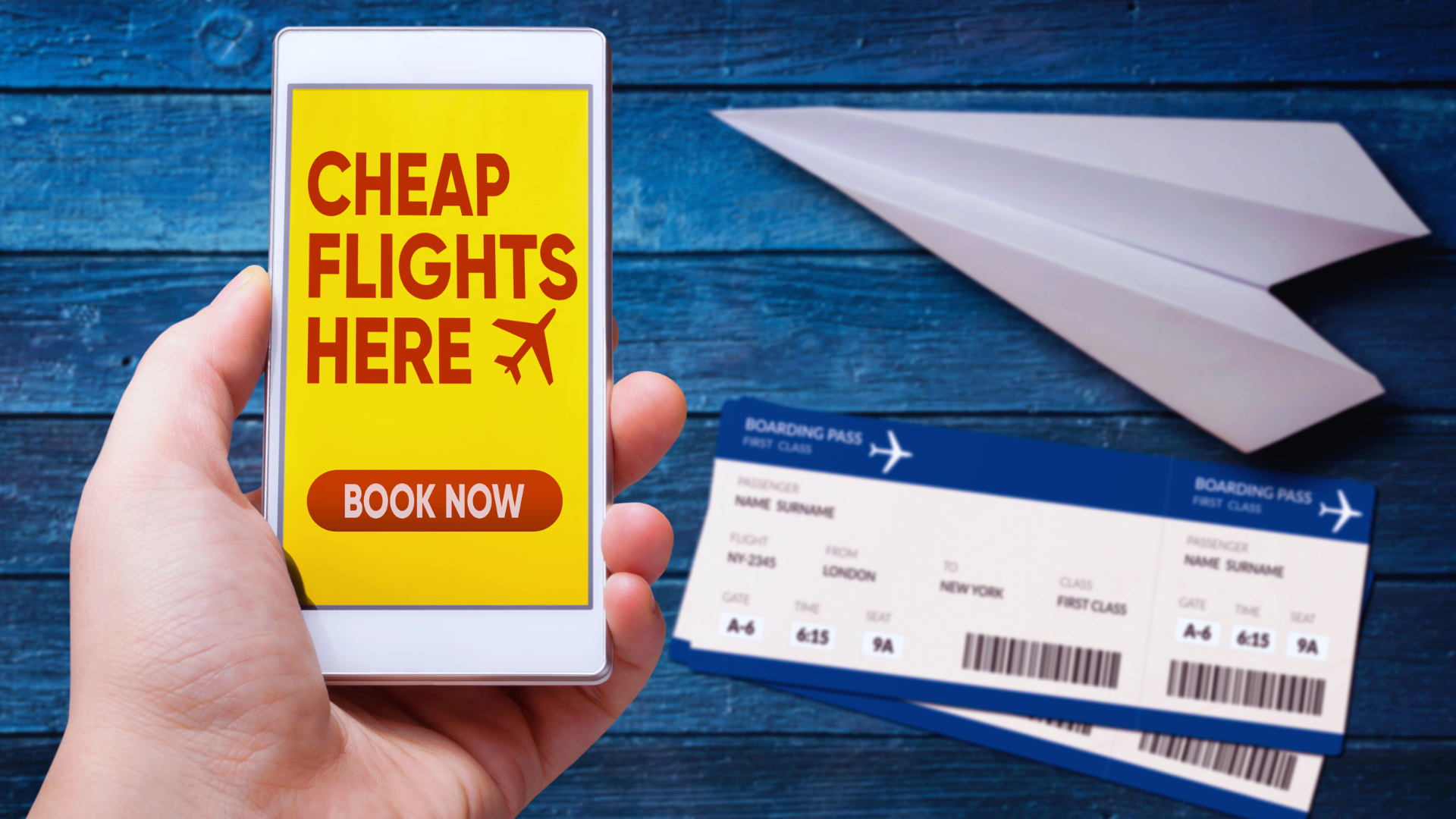For travelers seeking affordable options for international adventures, budget airlines offer a practical solution. These carriers provide an array of cheap flights that connect major cities around the world, making global exploration accessible to more people. Whether planning a spontaneous getaway or a well-deserved vacation, understanding which airlines deliver the best value can enhance the travel experience.
Budget airlines often come with trade-offs, such as limited amenities and strict baggage policies. However, savvy travelers know how to navigate these challenges to enjoy significant savings. Knowing which airlines consistently offer competitive pricing and reliability can make all the difference in trip planning.
From Europe to Asia and beyond, budget airlines are shaping the landscape of international travel. Selecting the right options can turn the dream of traveling abroad into a budget-friendly reality, paving the way for new experiences without breaking the bank.
What Defines the Best Budget Airlines for International Travel
Identifying the best budget airlines for international travel involves understanding specific features, the balance between affordability and value, and how they differ from full-service options. The following outlines key components that define these low-cost carriers.
Essential Features of Leading Low-Cost Carriers
Top-budget airlines typically excel in several areas that appeal to cost-minded travelers. Key features include:
- Low Base Fares: These airlines often market fares lower than traditional airlines, attracting budget-conscious travelers.
- No Frills: Services like in-flight meals and entertainment may not be included, allowing lower prices.
- Flexible Pricing: Options for added services, such as priority boarding or extra baggage, are available at an additional cost.
- Alternate Airports: Many operate from secondary airports, offering cheaper landing fees and better overall prices.
Together, these aspects create an attractive option for those prioritizing cost over comfort.
Balancing Price, Value, and Convenience
While affordability is paramount, successful budget airlines find a balance between price and value offered. Competitive fares do not always equate to a lack of quality. Key points to consider include:
- Customer Service: An efficient booking process and responsive support can enhance the travel experience, even for low-cost options.
- Safety Records: Travelers often overlook this aspect. Industry standards for safety must be met regardless of the low-operating model.
- Punctuality: Timely departures and arrivals are crucial for maintaining travel plans.
Prices may be low, but quality service can significantly impact a traveler’s experience.
Differences Between Full-Service and Budget Airlines
Budget airlines differ from full-service carriers in several significant ways. Understanding these differences helps travelers make informed choices:
- Cost Structure: Full-service airlines often include various amenities in the ticket price, while budget airlines charge separately.
- Flight Experience: In-flight services, such as meals or seat selection, may be limited in budget options, affecting overall comfort.
- Loyalty Programs: Full-service airlines may offer frequent flyer programs that reward travelers; budget airlines’ loyalty options are often less robust.
These differences shape the choice between airlines and significantly impact each traveler’s experience.
Top Budget Airlines for International Routes
Budget airlines have transformed international travel by making it more accessible. Several carriers excel in providing affordable flights across various regions, appealing to cost-conscious travelers seeking value without compromising on essential services.
European Stars: Ryanair, easyJet, and Wizz Air
Ryanair is known for its extensive network across Europe, offering routes to over 200 destinations. Passengers can find flights at competitive prices, although fees for extras like checked baggage can add up.
easyJet offers a user-friendly booking experience and operates on numerous primary and secondary airports, allowing for flexibility in travel plans. It provides various fare options, ensuring passengers can select the best value for their needs.
Wizz Air specializes in Central and Eastern Europe, connecting travelers to lesser-known but exciting destinations. The airline frequently runs attractive promotions, which makes it popular among budget travelers.
Asia-Pacific Standouts: AirAsia, Scoot, Jetstar Airways, and ZIPAIR
AirAsia is a leading low-cost carrier in Asia, known for its extensive routes and strong reputation for reliability. It offers a range of services, from basic fares to add-ons for baggage and in-flight meals.
Scoot, a subsidiary of Singapore Airlines, provides budget flights primarily in the Asia-Pacific region. The airline uses Boeing 787 Dreamliners, which enhance passenger comfort on longer routes.
Jetstar Airways, an Australian budget airline, links major cities in Australia with international destinations in Asia and the Pacific. They often have promotional fares that attract many travelers.
ZIPAIR offers an innovative approach to low-cost travel with a focus on transcontinental routes. This carrier combines affordability with quality service to appeal to travelers looking for long-haul options.
Transatlantic Leaders: Norwegian Air, LEVEL, Play Airlines, Norse Atlantic Airways
Norwegian Air has been a prominent player in low-cost transatlantic travel, providing routes between Europe and North America. It is known for its modern fleet and flexibility in pricing structures.
LEVEL, a subsidiary of the International Airlines Group, targets the transatlantic market with competitive fares and a simplified booking process, appealing to budget-conscious travelers heading to major cities.
Play Airlines, an Icelandic budget airline, focuses on low-cost flights between Europe and North America. It connects major European hubs with popular U.S. destinations while maintaining affordability.
Norse Atlantic Airways aims to redefine budget travel across the Atlantic by leveraging a fleet of Boeing 787 Dreamliners. This airline emphasizes both comfort and competitive pricing.
Prominent North and Central American Airlines: JetBlue, Southwest Airlines, JetSmart
JetBlue has carved a niche in the North and Central American markets with its affordable fares and high-quality service. It includes complimentary in-flight entertainment and snacks, enhancing the overall travel experience.
Southwest Airlines is renowned for its no-frills approach and flexible policies, such as no fees for checked bags and easy rebooking. This makes it a favorite among domestic travelers with routes extending into Mexico and the Caribbean.
JetSmart, based in Chile, is an emerging low-cost player focusing on South American routes. It connects passengers to various destinations in the region while maintaining affordable pricing, ideal for budget travelers.
How to Maximize Savings and Comfort on Budget Airlines
Budget airlines offer significant savings, but understanding how to navigate their policies and practices can enhance both savings and comfort. Strategic planning can lead to better deals and a more enjoyable travel experience.
Securing the Best Flight Deals and Fares
To find the best deals on budget airlines, travelers should compare prices across multiple platforms. Websites and apps like Google Flights, Skyscanner, and Kayak allow users to track prices and identify low fares.
Booking flights during off-peak seasons typically results in lower prices. Flexibility with travel dates can lead to substantial savings. Setting up fare alerts can notify travelers when ticket prices drop, allowing them to act quickly. Additionally, subscribing to airline newsletters may provide exclusive promotions or flash sales that are not widely advertised.
Navigating Baggage Policies and Additional Fees
Understanding a budget airline’s baggage policy is crucial to avoid unexpected costs. Each airline has its own rules regarding checked bags and carry-on luggage.
Travelers should review the specific baggage fees associated with their chosen airline. For example, many budget carriers charge extra for checked luggage, while others include a small carry-on. Passengers should weigh their options: it might be worth purchasing a baggage add-on in advance to save money compared to paying fees at the airport.
Choosing Optimal Seats and Add-Ons
Selecting the right seat can greatly influence the flight experience. Many budget airlines offer premium economy seating for an additional fee, providing extra comfort.
Travelers should assess the layout of their aircraft to determine the best seating positions. Some apps allow passengers to choose seats and see passenger reviews. Utilizing add-ons, such as priority boarding, might also enhance comfort, especially for those who prefer quick boarding and exit.
Leveraging Mobile Apps, Alerts, and Loyalty Programs
Mobile apps are crucial tools for budget travelers. Many airlines have their own apps, providing easy access to flight options and check-in procedures. Users can also manage flight alerts through these apps to stay updated on fare changes and promotions.
Loyalty programs can also be beneficial for frequent travelers. These programs often offer perks, including discounted fares and priority services. By accumulating points, travelers might achieve complimentary upgrades or free flights, maximizing savings over time.
Additional Tips for Budget-Conscious International Travelers
Travelers seeking affordable options for international journeys can benefit from strategic choices when it comes to destinations, managing costs, ensuring reliability, and considering sustainability. Specific factors can significantly influence their experience and expenses.
Traveling to Popular and Emerging Destinations
Choosing the right destination can drastically affect travel budgets. Popular locations like Bangkok, Kuala Lumpur, and Tokyo Narita often have more budget flight options. These cities are well-connected and attract multiple low-cost airlines.
Emerging destinations in Central America and the Caribbean can also offer great deals. Off-peak seasons often feature lower airfares and accommodation costs. By opting for secondary airports, travelers can access cheaper flights while potentially avoiding the hustle of larger hubs.
Managing Travel Costs Beyond Flights
Airfare is just one component of travel expenses. To further manage costs, accommodations can be found through budget-friendly services like hostels or short-term rentals, especially in less tourist-heavy areas. Transportation costs can also be reduced by using public transit or walking.
Dining out has the potential to strain budgets if not managed well. Eating at local markets or street vendors often provides authentic cuisine at lower prices. Utilizing travel apps can help track spending and find discounts on activities.
Ensuring On-Time Performance and Quality Customer Service
On-time performance is a crucial factor for travelers. Many budget airlines provide essential tracking information to monitor flight schedules. It is wise to check a carrier’s historical performance and read customer reviews for insights into their reliability.
Customer service varies among budget carriers. Many offer limited support, which can lead to frustrations in case of changes or delays. Selecting airlines with better customer ratings may enhance the overall travel experience and mitigate potential issues.
Evaluating Sustainability and New Trends in Budget Air Travel
Sustainability is an increasingly essential concern in aviation. Many budget airlines are adopting eco-friendly practices, such as investing in fuel-efficient aircraft and implementing waste-reduction strategies. Travelers may want to research airlines committed to lower carbon footprints before booking.
New trends, such as digital check-ins and reduced in-flight services, are also changing the budget travel landscape. These innovations can lead to both savings and improved efficiency for customers. Keeping abreast of these developments allows travelers to make informed choices that align with their values and budgets.

